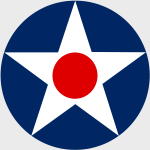Hobby Master HA0205 USN Douglas SBD-3 Dauntless Dive-Bomber - Lt(jg) Stanley W. Vejtasa and Radioman Frank B. Wood, VS-5, USS Yorktown (CV 5), May 8th, 1942 [Signature Edition] (1:32 Scale)
''Scratch one flattop!''
- Lieutenant Commander Robert E. Dixson, in charge of dive bombers aboard the carrier Lexington at the Battle of the Coral Sea, May 1942. He planted one of a dozen bombs that, with seven torpedoes, sank the Japanese carrier Shoho.
 The Dauntless was the standard shipborne dive-bomber of the US Navy from mid-1940 until November 1943, when the first Curtiss Helldivers arrived to replace it. Between 1942-43, the Dauntless was pressed into service again and again, seeing action in the Battle of the Coral Sea and the Guadalcanal campaign. It was, however, at the Battle of Midway, that the Dauntless came into its own, singlehandedly destroying four of the Imperial Japanese Navy's frontline carriers. The SBD (referred to, rather affectionately by her aircrews, as "Slow But Deadly") was gradually phased out during 1944. The June 20th, 1944 strike against the Japanese Mobile Fleet, known as the Battle of the Philippine Sea, was the last major engagement in which it was used. From 1942 to 1944, the SBD was also used by several land-based Marine Corps squadrons.
The Dauntless was the standard shipborne dive-bomber of the US Navy from mid-1940 until November 1943, when the first Curtiss Helldivers arrived to replace it. Between 1942-43, the Dauntless was pressed into service again and again, seeing action in the Battle of the Coral Sea and the Guadalcanal campaign. It was, however, at the Battle of Midway, that the Dauntless came into its own, singlehandedly destroying four of the Imperial Japanese Navy's frontline carriers. The SBD (referred to, rather affectionately by her aircrews, as "Slow But Deadly") was gradually phased out during 1944. The June 20th, 1944 strike against the Japanese Mobile Fleet, known as the Battle of the Philippine Sea, was the last major engagement in which it was used. From 1942 to 1944, the SBD was also used by several land-based Marine Corps squadrons.
Built as a two-seat, low-wing Navy scout bomber, the Dauntless was powered by a single Wright R1820 1200-horsepower engine. It became the mainstay of the Navy's air fleet in the Pacific, suffering the lowest loss ratio of any U.S. carrier-borne aircraft. A total of 5,936 SBDs were delivered to the Navy and Marine Corps between 1940 and the end of its production, in July 1944.
This particular 1:32 scale replica of a US Navy SBD-3 Dauntless dive-bomber was piloted by Lt(jg) Stanley W. Vejtasa and Radioman Frank B. Wood, who were attached to VS-5, then embarked upon the USS Yorktown (CV 5), on May 8th,1942. Only 300 pieces produced. Sold Out!
Dimensions:
Wingspan: 15-3/4-inches
Length: 12-1/2-inches
Release Date: November 2011
Historical Account: "Distinguished Service" - Stanley W. "Swede" Vejtasa shot down Japanese fighters while flying a lightly armed dive-bomber. Born in Montana, he joined the Navy just before the attack on Pearl Harbor. After pilot training, he was assigned to the USS Yorktown flying the Douglas SBD dive-bomber. The Yorktown, stationed on the East Coast, steamed through the Panama Canal and into the Pacific. Vejtasa got his first taste of combat, when Scouting Squadron Five (VS-5) flew strikes against Japanese targets in the Marshall and Gilbert Islands. In February 1942, VS-5 raided enemy shipping near New Guinea, and Vejtasa made a direct hit on a transport.
After 105 days at sea, the Yorktown hit Tulagi in the Solomon Islands. On his second mission over Tulagi, Vejtasa was attacked by a Mitsubishi Rufe, a Zero with a float. Vejtasa outmaneuvered the enemy fighter and, with the help of a squadron mate, shot it down. A few days later in the Coral Sea, during historys first battle between carrier fleets, Vejtasa put a bomb squarely into the Japanese light carrier Shoho. The ship sank the next day after taking more than 12 direct hits. On May 8th, 1942, one day after the sinking of the Shoho, he led 4 SBDs on an anti-torpedo patrol and added more enemy fighters to his score. Vejtasa was soon sent to fly Grumman F4F Wildcats with Fighting Ten (VF-10), "The Grim Reapers." On October 26th, 1942, Vejtasa was leading a combat air patrol from the USS Enterprise during the Battle of Santa Cruz.
Finding a formation of enemy dive-bombers just short of their release points, Vejtasa shot down two. Then he spotted 11 enemy torpedo bombers making a run on the Enterprise. In the next few minutes, he shot down five of these planes, scattering the attackers before they had a chance to finish their torpedo runs. For Vejtasa, it was seven victories in one day! He flew with VF-10 until May 1943. During this time, he flew missions from the USS Enterprise and from the islands of Guadalcanal and Espritu Santo. When the combat cruise of "The Grim Reapers" was finished, he went to NAS Atlantic City, New Jersey, to instruct pilots forming new squadrons. Eager for more combat, Vejtasa became Air Group Commander on a light carrier working up for the invasion of Japan, but the war ended before he could deploy.
After the war, in a very distinguished career, he served 16-1/2 years of carrier duty as a pilot, ships officer and ultimately Commanding Officer, USS Constellation. During Vietnam, he was Commander of Fleet Air, Mirimar, and was in charge of all training conducted on the West Coast. Officially credited with 11 victories, he has many decorations, including three Navy Crosses.


